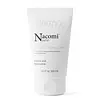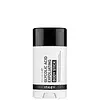What's inside
What's inside
 Key Ingredients
Key Ingredients

 Benefits
Benefits

 Concerns
Concerns

 Ingredients Side-by-side
Ingredients Side-by-side

Water
Skin ConditioningCetyl Alcohol
EmollientNiacinamide
SmoothingGlycerin
HumectantPrunus Amygdalus Dulcis Oil
Skin ConditioningPropanediol
SolventCetearyl Alcohol
EmollientGlyceryl Stearate
EmollientSalicylic Acid
MaskingAdansonia Digitata Seed Oil
EmollientButyrospermum Parkii Butter
Skin ConditioningVitis Vinifera Seed Oil
EmollientCaprylic/Capric Triglyceride
MaskingCoco-Caprylate/Caprate
EmollientSodium Polyacrylate
AbsorbentTocopheryl Acetate
AntioxidantStearic Acid
CleansingDextrin
AbsorbentPolydextrose
HumectantAmylopectin
Tetrasodium Glutamate Diacetate
Parfum
MaskingSodium Hydroxide
BufferingSodium Lauroyl Glutamate
Dehydroacetic Acid
PreservativeBenzyl Alcohol
PerfumingWater, Cetyl Alcohol, Niacinamide, Glycerin, Prunus Amygdalus Dulcis Oil, Propanediol, Cetearyl Alcohol, Glyceryl Stearate, Salicylic Acid, Adansonia Digitata Seed Oil, Butyrospermum Parkii Butter, Vitis Vinifera Seed Oil, Caprylic/Capric Triglyceride, Coco-Caprylate/Caprate, Sodium Polyacrylate, Tocopheryl Acetate, Stearic Acid, Dextrin, Polydextrose, Amylopectin, Tetrasodium Glutamate Diacetate, Parfum, Sodium Hydroxide, Sodium Lauroyl Glutamate, Dehydroacetic Acid, Benzyl Alcohol
Octyldodecanol
EmollientCoco-Caprylate/Caprate
EmollientButyrospermum Parkii Butter
Skin ConditioningHelianthus Annuus Seed Wax
Skin ConditioningGlycolic Acid
BufferingOzokerite
Emulsion StabilisingCetearyl Alcohol
EmollientWater
Skin ConditioningPEG-100 Stearate
Glyceryl Stearate
EmollientSimmondsia Chinensis Seed Oil
EmollientSalicylic Acid
MaskingCocamidopropyl Dimethylamine
EmulsifyingAscorbyl Palmitate
AntioxidantTocopherol
AntioxidantHelianthus Annuus Seed Oil
EmollientOctyldodecanol, Coco-Caprylate/Caprate, Butyrospermum Parkii Butter, Helianthus Annuus Seed Wax, Glycolic Acid, Ozokerite, Cetearyl Alcohol, Water, PEG-100 Stearate, Glyceryl Stearate, Simmondsia Chinensis Seed Oil, Salicylic Acid, Cocamidopropyl Dimethylamine, Ascorbyl Palmitate, Tocopherol, Helianthus Annuus Seed Oil
 Reviews
Reviews

Ingredients Explained
These ingredients are found in both products.
Ingredients higher up in an ingredient list are typically present in a larger amount.
This ingredient is also known as shea butter. It is an effective skin hydrator and emollient.
Emollients help soothe and soften your skin. It does this by creating a protective film on your skin. This barrier helps trap moisture and keeps your skin hydrated. Emollients may be effective at treating dry or itchy skin.
Shea butter is rich in antioxidants. Antioxidants help fight free-radicals, or molecules that may harm the body. It is also full of fatty acids including stearic acid and linoleic acid. These acids help replenish the skin and keep skin moisturized.
While Shea Butter has an SPF rating of about 3-4, it is not a sunscreen replacement.
Shea butter may not be fungal acne safe. We recommend speaking with a professional if you have any concerns.
Learn more about Butyrospermum Parkii ButterCetearyl alcohol is a mixture of two fatty alcohols: cetyl alcohol and stearyl alcohol. It is mainly used as an emulsifier. Emulsifiers help prevent the separation of oils and products. Due to its composition, it can also be used to thicken a product or help create foam.
Cetearyl alcohol is an emollient. Emollients help soothe and hydrate the skin by trapping moisture.
Studies show Cetearyl alcohol is non-toxic and non-irritating. The FDA allows products labeled "alcohol-free" to have fatty alcohols.
This ingredient is usually derived from plant oils such as palm, vegetable, or coconut oils. There is debate on whether this ingredient will cause acne.
Due to the fatty acid base, this ingredient may not be Malassezia folliculitis safe.
Learn more about Cetearyl AlcoholCoco-Caprylate/Caprate is created from fatty coconut alcohol, caprylic acid, and capric acid.
It is a lightweight emollient. Emollients create a thin barrier on the skin to trap moisture in. This helps keep your skin hydrated and soft.
Once applied, Coco-Caprylate/Caprate is absorbed quickly and leaves a silky feel.
Coco-Caprylate/Caprate may not be fungal acne safe.
Learn more about Coco-Caprylate/CaprateGlyceryl Stearate is a mix of glycerin and stearic acid.
It is used to stabilize the mixing of water and oil ingredients. By preventing these ingredients from separating, it can help elongate shelf life. It can also help thicken the product's texture.
As an emollient, it helps soften skin and supports barrier-replenishing ingredients.
In cosmetics, Glyceryl Stearate is often made from vegetable oils or synthetically produced.
This ingredient may not be fungal-acne safe
Fun fact: The human body also creates Glyceryl Stearate naturally.
Learn more about Glyceryl StearateSalicylic Acid (also known as beta hydroxy acid or BHA) is a well-known ingredient for treating skin that struggles with acne and clogged pores. It exfoliates both the skin's surface and deep within the pores to help clear out buildup, control oil, and reduce inflammation.
Unlike AHAs (alpha hydroxy acids), salicylic acid is oil-soluble. This allows it to penetrate into pores which makes it especially effective for treating blackheads and preventing future breakouts.
Salicylic acid is also known for its soothing properties. It has a similar structure to aspirin and can calm inflamed or irritated skin, making it a good option for acne-prone skin that is also sensitive.
Concentrations of 0.5-2% are recognized by the U.S. FDA as an over-the-counter topical acne product.
It can cause irritation and/or dryness if one's skin already has a compromised moisture barrier, so it's best to focus on repairing that before introducing this ingredient into your routine.
While salicylic acid does not increase sun sensitivity, it’s still important to wear sunscreen daily to protect your skin.
If you are looking for the ingredient called BHA or Butylated Hydroxyanisole, click here.
Learn more about Salicylic AcidWater. It's the most common cosmetic ingredient of all. You'll usually see it at the top of ingredient lists, meaning that it makes up the largest part of the product.
So why is it so popular? Water most often acts as a solvent - this means that it helps dissolve other ingredients into the formulation.
You'll also recognize water as that liquid we all need to stay alive. If you see this, drink a glass of water. Stay hydrated!
Learn more about Water